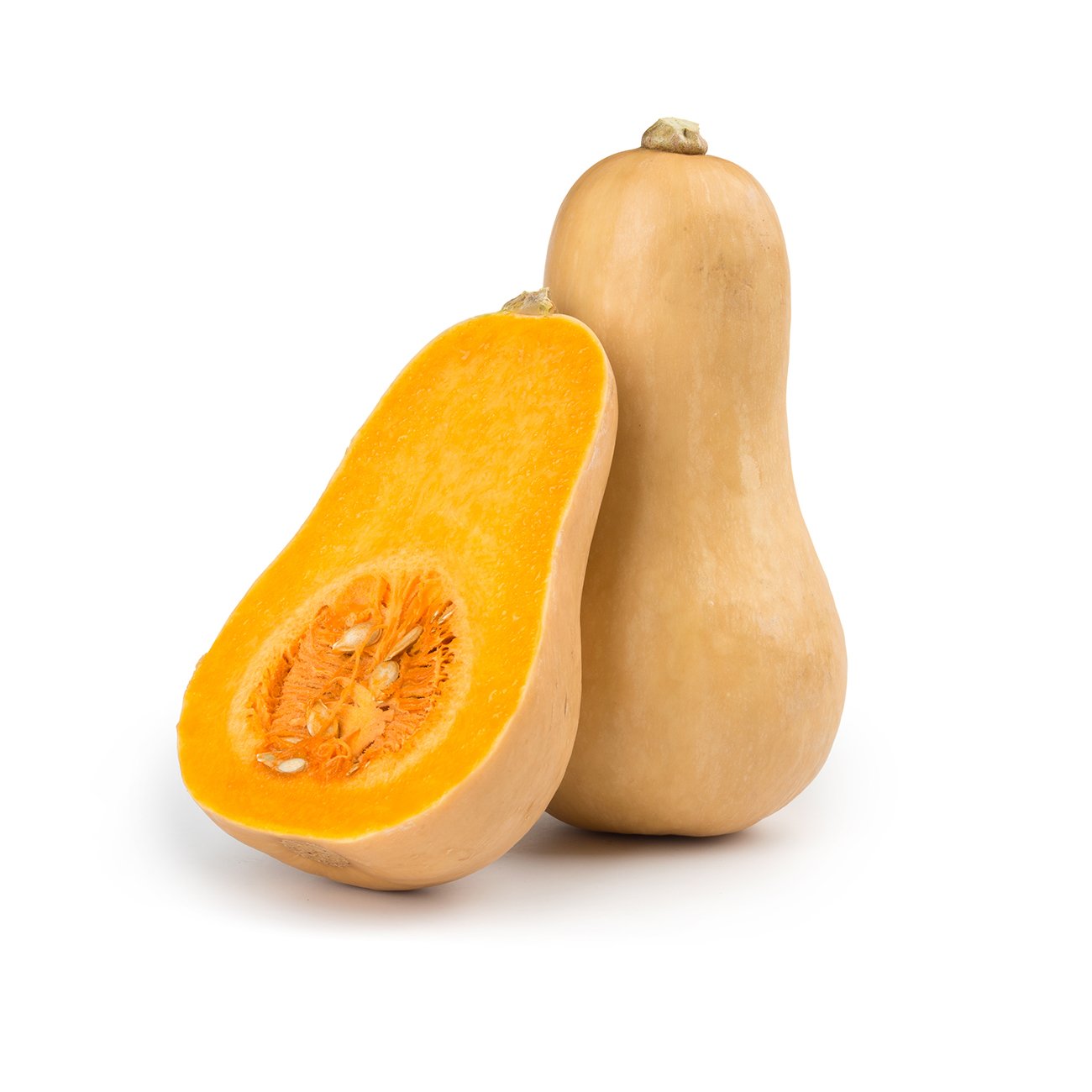Cauliflower
Mild in flavour and works as a great 'blank canvas' in dishes.
Alternative Name
N/A
Scientific Name
Brassica oleracea (botrytis group)
Health benefits
Bones & joints Brain & nervous system Digestion Heart Hydration Immune system
Cauliflowers have a compact head (called a 'curd'), which are actually tight white flower clusters, attached to a central stalk. Although most cauliflowers are white, there are also yellow, orange and purple variants. In recent years, cauliflower has had a resurgence of popularity. New cooking techniques include cauliflower 'rice' and whole roasted cauliflower.
-
Harvesting
Cauliflowers are selected for size and compactness of the head or curd. A high quality cauliflower has a firm and compact head of white to cream white curds (or yellow or purple, depending on variety) surrounded by a crown of well-trimmed, turgid green leaves. Additional quality indices are size, freedom from severe yellowing due to sunlight exposure, freedom from handling defects and decay, and an absence of 'riciness'. Harvesting should be done with great care to prevent damage; bruising is very common and leads to rapid browning and decay.Postharvest storage temperature
Optimum storage is 0°C. Wilting, browning, yellowing of leaves and decay are likely to increase following storage beyond 3–4 weeks or at higher than recommended storage temperatures. Freezing injury will be initiated at -0.8°C. Symptoms include a water-soaked and greyish curd and wilted crown leaves.Controlled atmosphere storage
Controlled or modified atmospheres offer moderate to little benefit to cauliflower. Injury from low O2 (<2%) or elevated co2 (>5%) may not be visual but will be evident after cooking, when the curds become greyish, extremely soft and emit a strong off odour. Higher levels (>10%) of CO2 will induce this injury within 48 hours. Combined low O2 and slightly elevated CO2 levels (3–5%) delay leaf yellowing and the onset of curd browning by a few days. For fresh-cut applications, the sensitivity of cauliflower to improper modified atmosphere demands very careful selection of packaging films and proper temperature management.Ethylene sensitivity
Cauliflower is highly sensitive to exogenous ethylene. Discolouration of the curd and accelerated yellowing and detachment of wrapper leaf stalks will result from low levels of ethylene during distribution and short-term storage.Humidity storage
Store at 95–98% relative humidity.Disease & infection
Diseases are an important source of postharvest loss, particularly in combination with rough handling and poor temperature control. A number of different bacterial and fungal pathogens cause postharvest losses in transit, storage and to the consumer. Bacterial soft rot, black spot, grey mould and cladosporium rot are common disorders. -
Trim before use. Keep in vegetable drawer of fridge.
Nutrition information
| Qty per serve | % RDI per serve | Qty per 100g | |
|---|---|---|---|
| Energy | 74 kJ | 1% | 99 kJ |
| Protein | 1.6 g | 3% | 2.1 g |
| Fat, total | 0.2 g | 0% | 0.2 g |
| – saturated | 0 g | 0% | 0 g |
| Carbohydrate | 1.4 g | 0% | 1.9 g |
| – sugars | 1.4 g | 2% | 1.9 g |
| Dietary fibre, total | 2 g | 7% | 2.7 g |
| Sodium | 23 mg | 1% | 31 mg |
| Folate | 47 µg | 23% RDI | 62 µg |
| Vitamin C | 50 mg | 126% RDI | 67 mg |
| Vitamin K | 12 µg | 15% ESADDI | 16 µg |
| Potassium | 223 mg | - | 297 mg |
Note: % RDI are based on an average adult diet of 8700 kJ. Your daily intakes may be higher or lower depending on your energy needs. RDI = Recommended Dietary Intake; ESADDI = Estimated Safe and Adequate Daily Dietary Intake.

You might also like
Veggy tip
Use a food processer or grate cauliflower to turn it into cauliflower rice as an alternative to regular rice.



